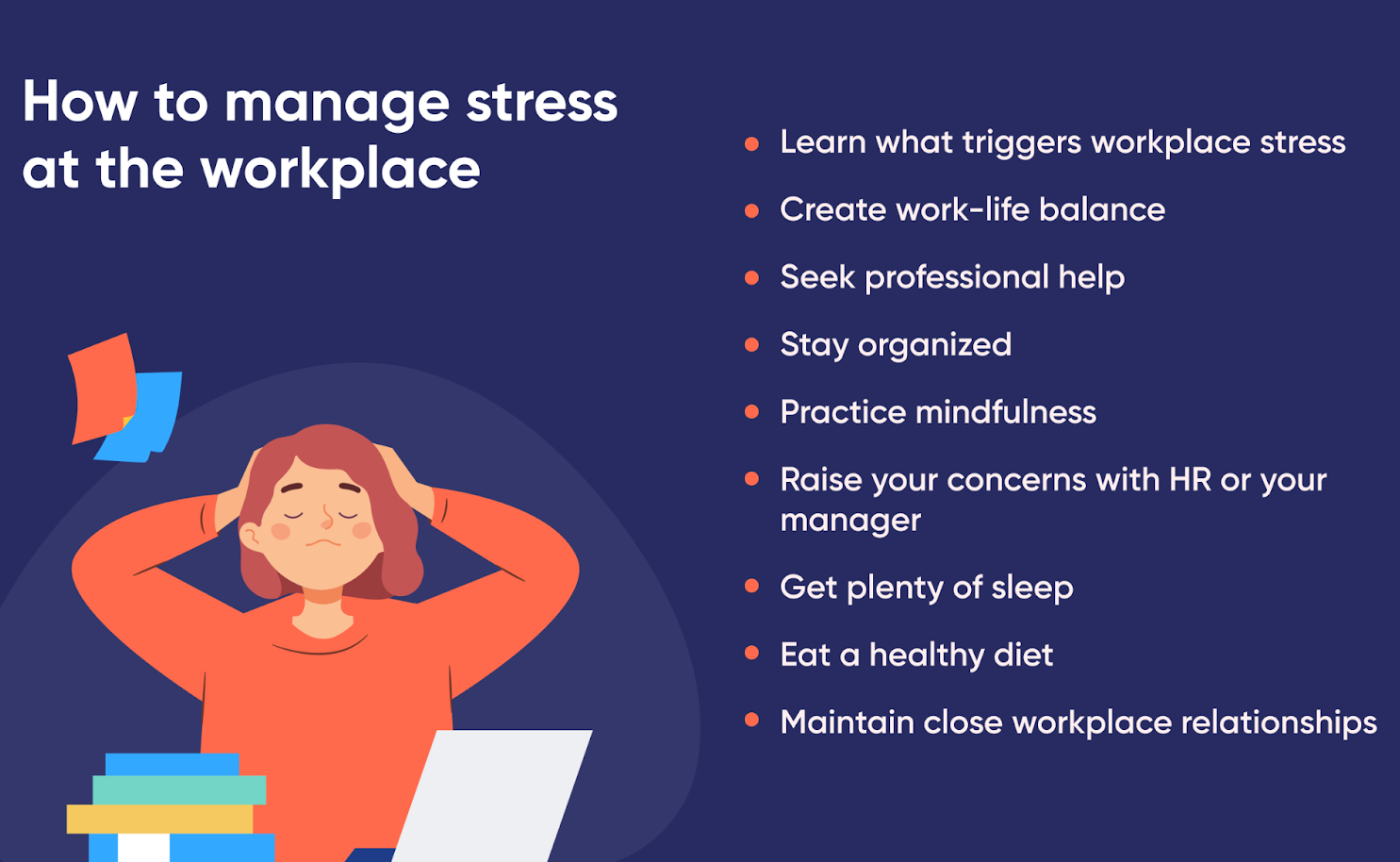Work – it can be a source of immense satisfaction and accomplishment. But let’s face it, it can also be a breeding ground for stress. Deadlines loom, workloads pile high, and email inboxes overflow – it’s no wonder so many of us feel overwhelmed and stressed at work.
The good news? You don’t have to become another statistic. Here’s a comprehensive guide packed with effective strategies to combat work stress and cultivate a calmer, more productive work environment.
Identifying Your Stressors: Knowing Your Enemy
The first step to conquering work stress is understanding its root cause. Here’s how to identify your stressors:
-
Keep a Stress Journal: Track your emotions and physical reactions throughout the workday. Note down situations, tasks, or people that trigger stress. This self-awareness helps you pinpoint your specific stressors.
-
Common Culprits: Workload overload, tight deadlines, unclear expectations, lack of control, office politics – all these factors can contribute to work stress. Identify which ones resonate most with you.
Taking Control: Strategies to Manage Work Stress
Once you’ve identified your stressors, it’s time to take action. Here are powerful strategies to manage work stress:
-
Time Management Techniques: Feeling overwhelmed by tasks? Utilize time management techniques like the Eisenhower Matrix to prioritize tasks and create a realistic schedule.
-
Set Boundaries: Establish clear boundaries between your work life and personal life. Turn off work notifications outside of work hours and avoid checking emails constantly.
-
Communication is Key: Don’t be afraid to communicate openly with your manager. Discuss your workload, concerns, and ask for support when needed. Clear communication can help alleviate stress and find solutions.
-
Delegate and Collaborate: Don’t try to be a one-person show. Delegate tasks whenever possible and collaborate with colleagues. Sharing the workload lightens the burden and fosters teamwork.
-
Mindfulness and Relaxation Techniques: Incorporate mindfulness practices like deep breathing or meditation into your workday. These techniques can help you stay calm and focused under pressure.
Cultivating a Stress-Resilient Work Environment
Remember, workplace stress isn’t just an individual issue. Here are ways to promote a stress-resilient work environment:
-
Supportive Company Culture: A company culture that values employee well-being can significantly reduce stress. Look for companies that offer flexible work arrangements, encourage breaks, and provide access to mental health resources.
-
Healthy Habits: Encourage healthy habits in the workplace. Promote physical activity with walking breaks or on-site yoga sessions. Provide access to healthy snacks and beverages to fuel employees for the day.
-
Open Communication: Foster a culture of open communication where employees feel comfortable discussing their workload and concerns with their managers.
Beyond the Basics: Advanced Strategies for Work Stress Mastery
While the core strategies above provide a solid foundation, for those seeking to conquer work stress on a deeper level, consider these advanced techniques:
-
Cognitive Behavioral Therapy (CBT): CBT can be a powerful tool for identifying and challenging negative thought patterns that contribute to stress. Consider self-help resources or consult a therapist to learn CBT techniques specifically geared towards managing work stress.
-
Building Resilience: Develop your emotional resilience to bounce back from setbacks and challenges. Practices like mindfulness meditation, gratitude journaling, and focusing on your strengths can all contribute to increased resilience.
-
Building a Support Network at Work: Seek out colleagues you trust and confide in. Having a supportive network at work can provide a sense of camaraderie, offer a listening ear during stressful times, and even lead to brainstorming solutions together.
-
Disconnect to Recharge: Schedule regular digital detoxes – periods where you completely disconnect from work emails and notifications. This allows your mind to truly unwind and recharge, returning to work feeling refreshed and focused.
-
Identify Your Energy Peaks and Valleys: Understanding your natural energy rhythms can significantly impact your work style. Schedule demanding tasks for when your energy is highest and use lower energy times for catching up on emails or administrative tasks.
-
Don’t Neglect Your Physical Health: Make healthy choices a priority. Eat nutritious meals, get regular exercise, and prioritize quality sleep. Taking care of your physical health strengthens your mental resilience and helps you better manage stress.
Conclusion: Building a Sustainable Work Life
Remember, managing work stress is an ongoing process. By identifying your stressors, implementing effective coping mechanisms, and advocating for a stress-resilient work environment, you can cultivate a healthier, more productive work life. Don’t let stress become the norm – take control, create a work environment that supports your well-being, and thrive in your professional journey.
